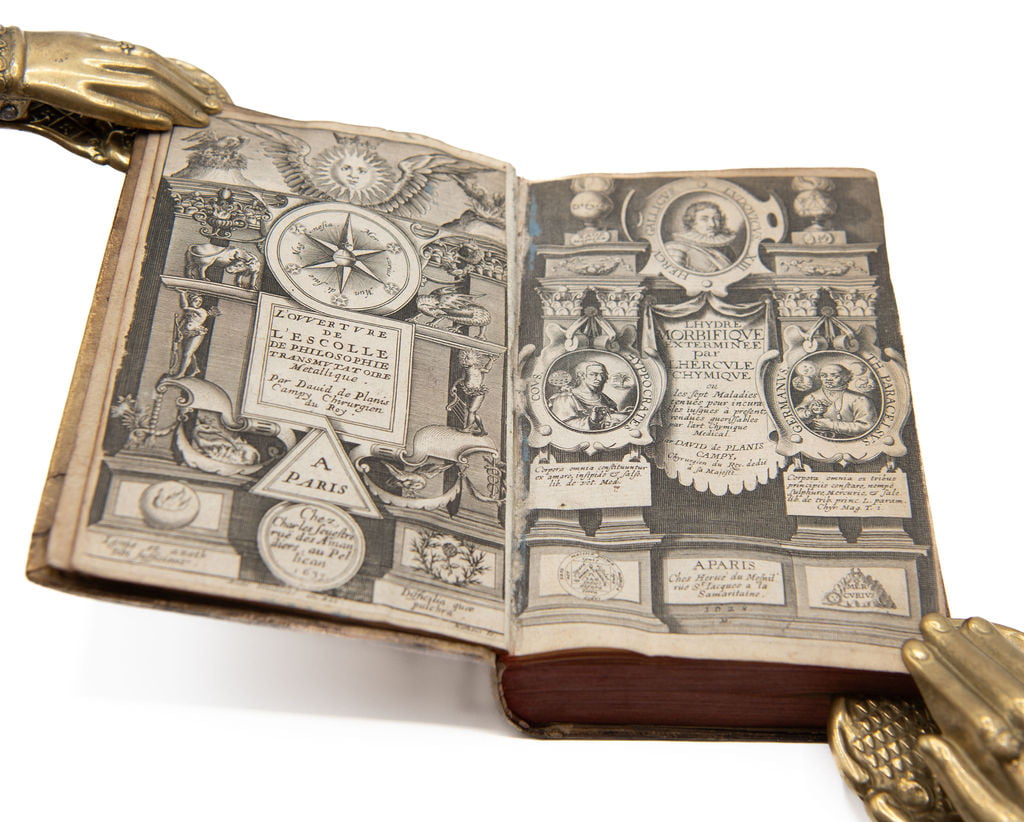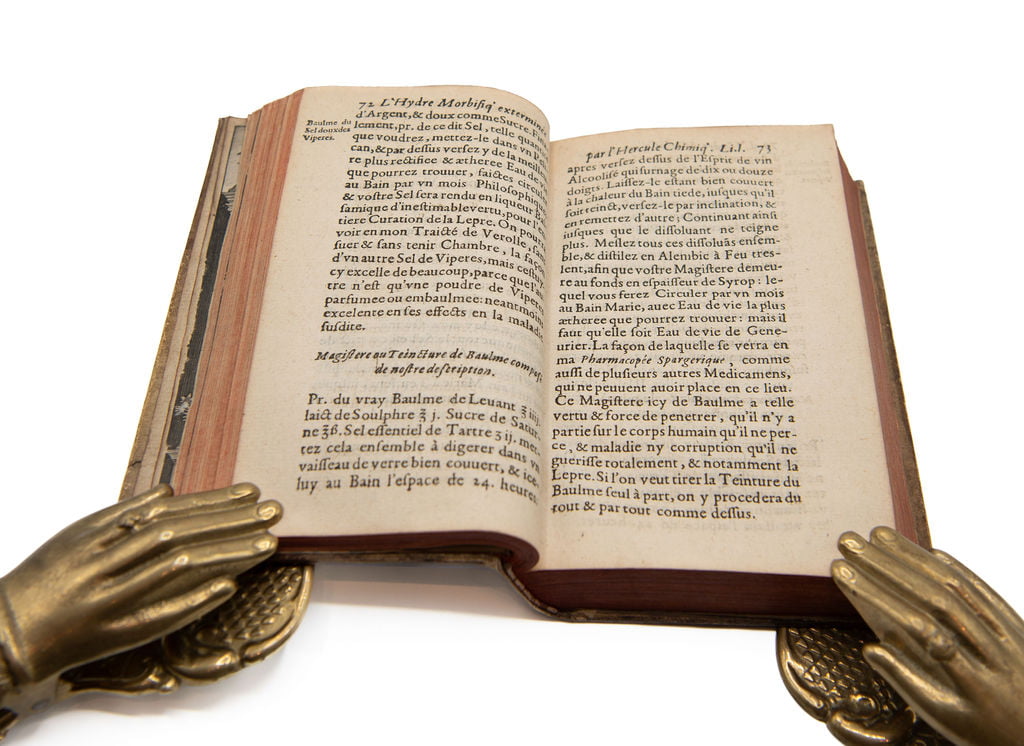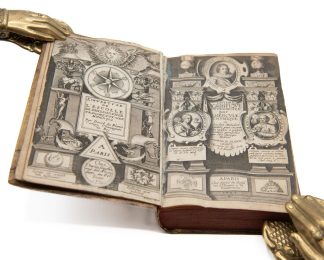PLANIS CAMPY, David de.
L’hydre morbifique exterminée par l’Hercule chimerique
Paris, Du Mesnil, [1628]£1,950.00
FIRST EDITION. 8vo. pp. [xlii] 576. Roman letter, some Italic. Finely engraved frontispiece title, (fractionally trimmed at outer edge), Louis XIII above, Hippocrates and Paracelsus to the sides, extra illustrated with another architectural title page taken from “L’Ouverture de L’Escolle de Philosophie Transmutatoire Metalique” 1633, with alchemical symbolism, finely engraved portrait of the Author within roundel (fractionally trimmed at outer edge), woodcut initials and headpieces, typographical ornaments, modern bookplate of Maurice Villaret on pastedown. Age yellowing, the rare marginal spot. A good copy, the engraved t-p’s in fine dark impression, in contemporary vellum over boards, a little soiled, a.e.r.
Very rare first edition of this most interesting medical work based on astrology and alchemy, beautifully printed with a fine engraved portrait of the author and hermetic title, with an additional beautifully engraved alchemical title. “An author who deserves greater attention than he has received is David de Planis Campy (1589-ca.1644), who produced ten works on medical chemistry and traditional alchemy. He was a councillor and Chirurgien ordinaire to Louis XIII, and his works were collected and published in a folio volume in 1646. He wrote that alchemy is a science that teaches the means of separating the elements of each mixed body produced by nature and of separating the pure from the impure.”A. G. Debus, ‘The French Paracelsians’. Planis Campy wrote on phlebotomy, musket wounds, the plague, and mineral and chemical remedies. He made several references to Dee’s Monas in his works. The engraved title page flatteringly presents King Louis XIII as the ‘French Hercules’. At the foot of the pedestal on the left there is a round diagram representing the principles of ‘the Great Work’ with the Hebrew word ‘Yah’, at the centre, which corresponds to the divine, heavenly principle. On the opposite side are the sun, moon and mercury, within a mountain or the philosophers stone. The portrait of the author is also very fine. The circular French inscription gives his name and states that here, in 1627, he is in his 38th year and is surgeon to the French King. It refers to him as ‘L’Edelphe’ a follower of the theories of Paracelsus, also indicated by references to the microcosm and macrocosm in the book placed in front of him.
The present work has the subtitle “the seven illness held, until now, to be incurable, and now treatable with the art of chemical medicine”, the hydra of the title having seven heads. The work is thus divided into seven chapters each dealing with one of these illnesses. They are in order; Leprosy, ‘Podagre’ or Gout, Hydropsie, Epilepsy, Cancer, ‘Noli me-tangeré’ or hidden cancer, and ‘Escrouelles’ another form of malign cancer. Each chapter gives a definition of the illness followed by its causes, various forms of the illness, its signs, and prognostics followed by various chemical cures devised by the author. As such it give tremendous insight into the new forms of ‘chemical’ treatments that moved away from traditional Galenic medicine.
USTC 6002910. Caillet III, 8723. “Ce célèbre médecin attribuait les causes de certaines maladies à l’influence des astres et prétendait les guérir par la méthode de Paracelse.” Guaita 843. “ouvrage de la plus grande rareté, orné d’un portrait de l’auteur gravé par Michel l’Asne et d’un beau frontispice par le même artiste réunissant les portraits de Paracelse, d’Hippocrate et du Roi Louis XIII, flatteusement désigné par l’épithète Hercule Gallicus”. Dorbon 6461. “Un des plus intéressants ouvrages de médecine ancienne, basée sur l’alchimie et sur l’astrologie”. Welcome 5078. Cantamessa 6.196 bis. Not in Durling or Osler.In stock





